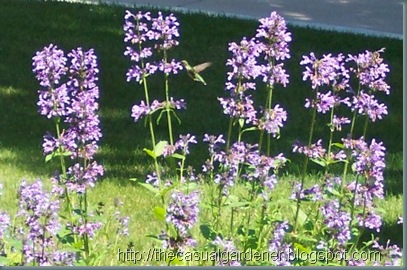Plan Your New Garden Off-Season —— Garden Suggestions for a Sunny Dry Site
Dear Casual Gardener,
Your ideas for a shade garden were helpful in my backyard. In my front yard I have a large, dry, full sun planting bed. All plants die that I plant there because I do not have the time to water consistently. What perennial plants will survive these conditions?
Signed,
Parched Pal
= = = = = = = = = = = = =
Dear Parched,
I have the best solution ever: Xeriscaping!
Xeriscaping concepts were originally created and trademarked by the Front Range Xeriscape Task Force of the City of Denver, Colorado’s Water Department in 1981. Xeric (pronounced “zeer-rick”) Design involves the use of drought-tolerant plants, preferably native to the area with water-conserving planting techniques. Other terms that describe these techniques include, “smart scaping” or “drought-tolerant landscaping”. Compared to growing and maintaining a lawn, most Xericscaped perennial gardens offer far more appeal in both attractiveness and water-saving capability.
All plants require water, particularly when getting established. A Xeriscape solution still involves watering. It will, however, allow you to water far less if well planned. Start with the planting bed. Make sure you have a well dug bed and amend the soil with plenty of water holding amendments like compost. If your bed is on a hill, consider terracing the area to prevent run-off. I highly recommend using some of the wonderful new soil polymer products available that help retain water in pots and beds if you have a non-clay or sandy soil. Often called “water crystals” or “polymer crystals”, they are completely safe for the environment and work by expanding and holding water within the soil. These polymers can last for many years. If you have clay soil, which can hold water and rot roots, be sure to amend soil for proper drainage.
Once you get the bed established, it’s important to pick the right plants. Native plants suited to dry, hot conditions are best for a hot dry spot. To assist your Xeriscape design, try grouping plants that require more water closely together – then you will spend less time watering the entire bed. My particular favorites for hot, sunny locations include Russian Sage, Coronation Gold Yarrow (pictured to the right), Yucca, Sedum, Agastache, Echinacea, Sage (of all varieties), Lavender, Salvia, Catmint (pictured in top photo with a hummingbird and below), Coreopsis, Delosperma, Vinca, Poppy Mallow, and for an interesting cactus-like look; the Hardy Century Plant.
Finally, once you plant your plants, please MULCH, MULCH, MULCH!! It holds in water and protects roots from both winter and summer harsh weather. The first year will require more water to establish rooting well. My recommendation to conserve water the first year is to initially water once every week or two. Soak the roots heavily in the morning or the evening, watering more frequently only if required. Watering heavily and deeply will allow for deeper root growth. Watering shallowly and more frequently will not be as good for the root system and will promote shallow roots. After establishment, most Xeriscape perennials adapt well to there environment and become virtually trouble-free.
To learn more about Xeriscaping plants and where you can purchase them mail-order, please go to a few of my favorite websites: http://www.highcountrygardens.com/ and www.plantsofthesouthwest.com. You can also find lots of fellow gardeners on http://www.gardenweb.com/ who are learning how to Xeriscape and might offer advice.
Happy Gardening!!!
Shawna Coronado says Get Healthy! Get Green! Get Community!
Plan Your New Garden Off-Season – How to Design a Garden





